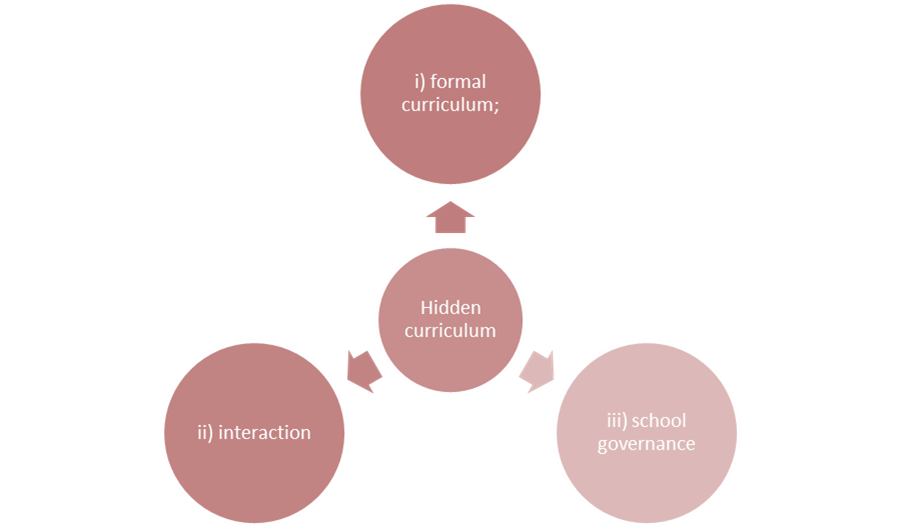Ever walked into a classroom and felt a certain energy, a sense of expectation, or even a pressure to conform? You might be picking up on the “hidden curriculum,” a fascinating concept that goes beyond textbooks and lectures. This unspoken world of learning shapes our values, behaviors, and even our identities – often in ways we don’t even realize.

Image: www.youtube.com
The “hidden curriculum” refers to the informal and often unacknowledged lessons students learn in school settings. It encompasses the unspoken rules, expectations, and values that guide student behavior, thinking, and interaction. This concept reveals the complex interplay between formal education and the broader social and cultural context in which it takes place, offering a deeper understanding of the formative experiences that shape us.
The Roots of the Hidden Curriculum
Early Influences
While the term “hidden curriculum” emerged in the mid-20th century, the concept itself has roots in earlier observations of the informal learning process. Sociologist John Dewey, a pioneer in educational thought, recognized the importance of social interactions and the environment in shaping student experiences. His work, particularly his emphasis on experiential learning, laid the groundwork for understanding the impact of hidden messages within school settings.
Formalization of the Concept
In the 1960s, sociologist Philip Jackson‘s groundbreaking work, Life in Classrooms, popularized the term “hidden curriculum.” Jackson meticulously observed classrooms, highlighting the “hidden” aspects of school life that influenced student behavior, including teacher expectations, classroom dynamics, and the implicit values conveyed through everyday interactions.

Image: responsiblemanagement.net
Unpacking the Layers of the Hidden Curriculum
1. The Power of Implicit Messages
The hidden curriculum operates through subtle cues and unspoken messages. It can be found in:
<ul>
<li> Seating arrangements that emphasize competition or cooperation</li>
<li> The way teachers respond to different types of student behavior</li>
<li> The curriculum choices that prioritize certain subjects and skills over others</li>
</ul> These implicit messages communicate what is valued, what is expected, and, importantly, what is deemed “normal” within a particular school community.
2. Shaping Values & Beliefs
The hidden curriculum transmits cultural values, societal norms, and even biases. For instance, a curriculum that focuses primarily on Western history might inadvertently reinforce Eurocentric perspectives. Similarly, school rules and disciplinary policies can reflect prevailing social beliefs about appropriate behavior, gender roles, and racial dynamics.
3. Learning Beyond Textbooks
The hidden curriculum extends beyond the classroom itself. It can permeate school culture, extracurricular activities, and even the physical environment. The design of school buildings, the layout of hallways, the availability of resources, and even the interactions between students and administrators all contribute to the unspoken messages that shape a student’s experience.
Beyond the Classroom: The Hidden Curriculum in Everyday Life
The concept of the hidden curriculum isn’t confined to formal education. It’s a crucial lens for understanding learning experiences in a wide range of settings, including families, communities, workplaces, and even social media. Think about:
<ul>
<li>The expectations you learned about communication and behavior within your family</li>
<li>The unspoken rules of navigating social groups or online spaces</li>
<li>The values and priorities conveyed by the brands you consume</li>
</ul>These subtle messages play a powerful role in shaping our beliefs, attitudes, and behaviors. Recognizing the hidden curriculum helps us become more critical consumers of information and more aware of the unspoken forces that shape our experiences.
Navigating the Hidden Curriculum
The Importance of Critical Thinking
As students, citizens, and individuals, we must develop our ability to critically examine the hidden messages we encounter. Ask yourself:
<ul>
<li> What are the underlying values being communicated?</li>
<li> How are these messages influencing my understanding of the world?</li>
<li> Are there alternative perspectives or ways of thinking that are being excluded?</li>
</ul>Challenging Implicit Norms
The hidden curriculum is not static. It can be challenged and transformed. Teachers, parents, and students can play a role in promoting a more inclusive and equitable learning environment by:
<ul>
<li>Explicitly addressing values, biases, and societal norms</li>
<li>Creating opportunities for diverse perspectives to be heard</li>
<li>Embracing a culture of questioning and critical inquiry</li>
</ul>A More Equitable Future
Recognizing and addressing the powerful influence of the hidden curriculum is crucial for creating a more equitable and inclusive society. By fostering critical thinking, challenging implicit norms, and fostering open dialogue, we can create learning environments that empower individuals to navigate the complexities of the world and contribute to a more just and equitable future.
The Term Hidden Curriculum Refers To
Conclusion
The term “hidden curriculum” illuminates the complex world of education, beyond the formal curriculum. By understanding the unspoken lessons we learn, we can become more critical thinkers, better equipped to navigate the hidden messages that shape our experiences and build a more equitable future for ourselves and future generations.






